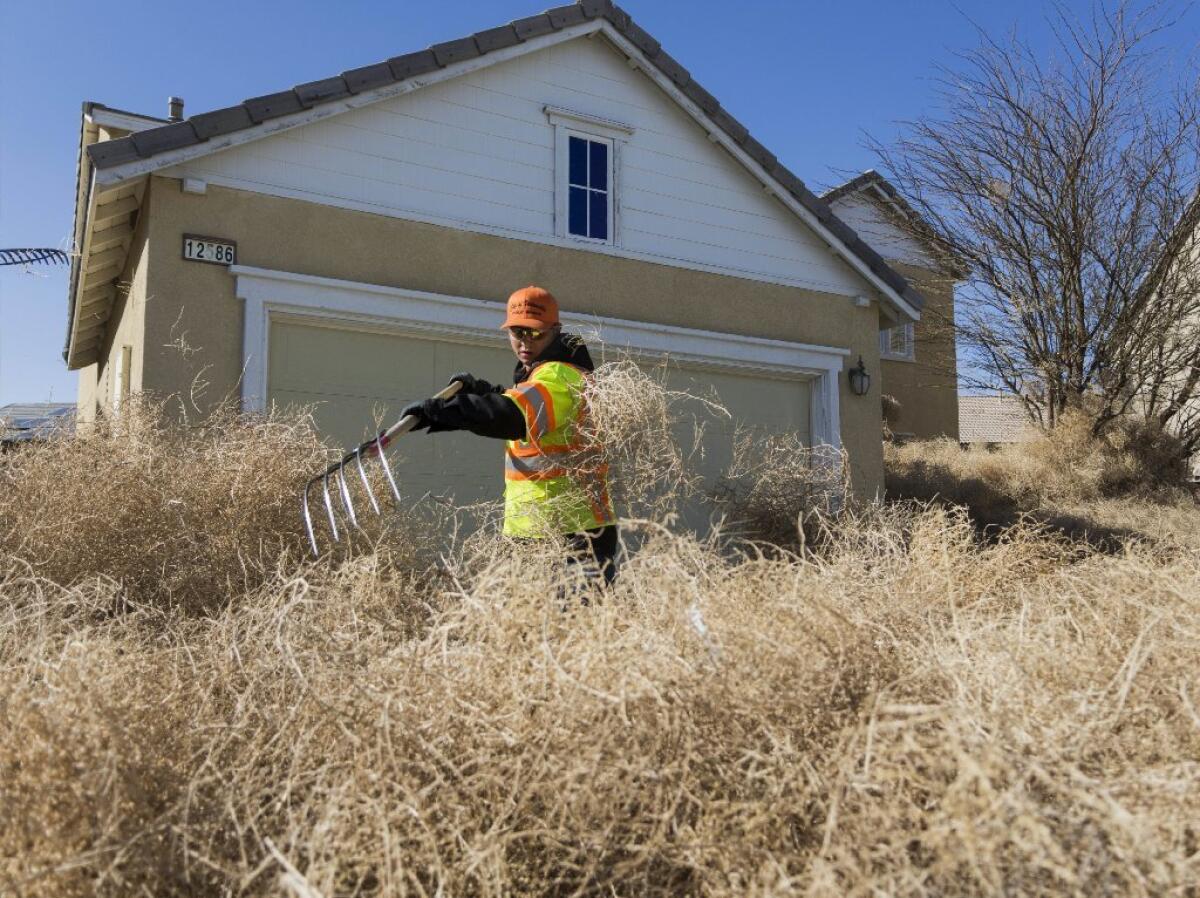Tumbleweeds have invaded a California town, but where did they come from?

A recent tumbleweed invasion in Victorville, California — a remote city northeast of Los Angeles best-known for being on the freeway from L.A. to Las Vegas — has attracted national attention after images of homes buried under the rolling dry weeds have gone viral all over social media.
But you have to see the images to believe it.
Authorities blamed wind gusts of up to 60 mph for blowing the dry weeds into neighborhoods where as many as 150 homes were affected by the invasion, the Victorville Daily Press reported. Some homes were so buried in tumbleweeds that residents called 911 for help.
Tumbleweeds are no strangers to many parts of California and a few other states like Texas and Kansas, and they can be seen rolling across roads or stuck in fences. But where do these invasive, prickly weeds come from?
Tumbleweeds are a plant

Tumbleweeds are essentially the dead, dried-up remains of a plant that grows on the surface. Several plant species can turn into tumbleweeds, but the University of California says the name of the plant most commonly associated with them is the Russian thistle.
The scientific name of the Russian thistle is Salsoa tragus, which is part of the Chenopodiaceae family plant, also known as Goosefoot family, according to the U.S. Department of Agriculture.
In addition to their bushy and prickly characteristics, one large plant can produce more than 200,000 seeds. When it dies and its stem breaks from the soil, the tumbleweed will roll around dispersing its seeds wherever the wind takes it — that’s how their invasion expands.
They are not native to North America
As the name suggests it, the plant is native to Russia. Russian immigrants in 1873 introduced it to the U.S. when it was used as a contaminant in flax seed in South Dakota. Then in 1895, they were introduced to the Pacific Coast when tumbleweeds found their way on railroads and livestock cars headed to California’s Antelope Valley.
The Russian thistle is now commonly seen in states like California, Oregon, Washington, Texas and even Southern states like Louisiana, Georgia and Florida.
They are a nuisance everywhere, not just California
Tumbleweeds are an agricultural pest and people all over, not just California, have shared their experiences with the dried up plants. Check out these images from people in Oregon, Washington, Kansas and even Arizona.
The USDA is making efforts to eradicate tumbleweeds for good — the government has apparently imported viruses from Russia and Hungary to test them, according to Western Farm Press. But that solution has yet to be put to the test.
Email: luis.gomez@sduniontribune.com
Twitter: @RunGomez
Read The Conversation on Flipboard.

